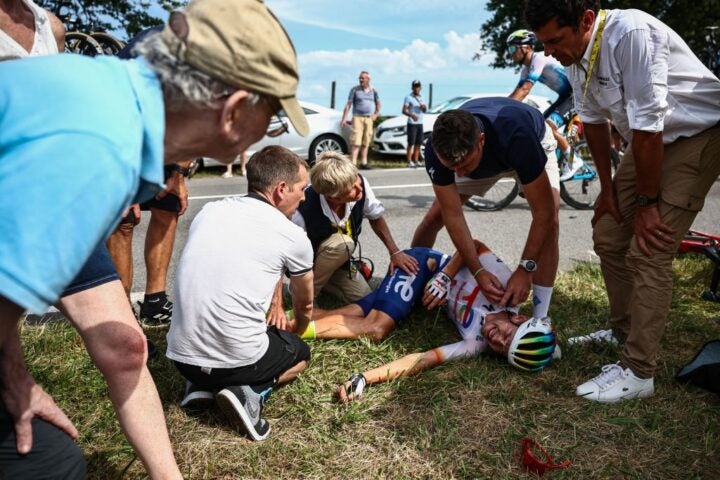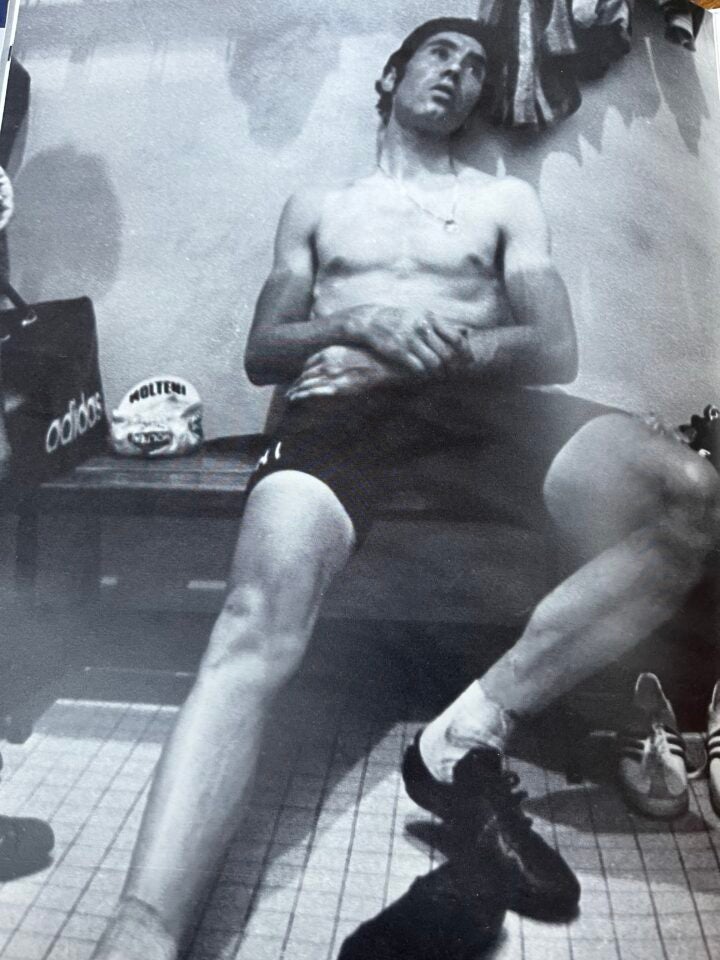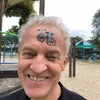When the Belgian climber Steff Cras of TotalEnergies, who was lying 13th on GC, crashed out of the Tour de France on stage 8 because of a spectator stepping into the road, it got me thinking about the interplay between the Le Tour and its millions of roadside fans.
The peloton was in full flight when Cras collided with the spectator, just 6km from the stage finish in Limoges. Five others hit the deck including two other GC candidates, Simon Yates and Mikel Landa, who would lose a valuable 47 seconds by the finish.
Also read: Fan provokes crash that knocks podium contenders down and out of Tour de France
Cras was left writhing in pain on the grass before he was lifted onto a stretcher and taken to the hospital in a race ambulance.
No broken bones were detected but he had multiple contusions on his hip and elbow—not the most welcome news for Cras, who exited last month’s Critérium du Dauphiné on stage 2 with a fractured elbow, which was the same injury, along with a broken scaphoid and finger, that cut short his Vuelta a España last year, also on stage 2.

Then, on Sunday’s Tour stage to the Puy de Dôme, Intermarché-Circus-Wanty’s Lilian Calmejane was brought down by another fan. Ironically, this one was holding one end of a line of historic race jerseys worn by Raymond Poulidor, the late French hero whose 1964 duel with Jacques Anquetil on the Puy de Dôme was being honored that day.
The pole the fan was holding snapped and Calmejane became entangled in the jerseys and string. The French rider later tweeted: “Just a word: The passion of the Tour is magic but take care on the roadside [with] flags, phones, etc. … it’s never fun to hit the tarmac. I was lucky even if I’m pretty sore. Thanks.”
Earlier in this Tour, Calmejane posted a short video showing five thumbtacks stuck in his front tire after the second stage in the Basque Country, where more than 15 riders suffered flats, slow punctures or ended the stage with tacks still stuck in their tires.
Again, this was caused by some ill-meaning spectator scattering tacks on the road—a similar thing happened on stage 11 of the 1996 Tour when we had a couple of flats (one slow) in our VeloNews press car and had a hard time finding a place to repair them that night.
Sabotage at the Tour
This sort of sabotage is nothing new at the Tour.
Carpet tacks were strewn on the road during the 1904 race, when partisan fans created much more hostile mayhem targeting the men competing against their particular heroes. Describing that Tour a half-century ago, my first magazine editor J.B. Wadley wrote about some supporters of Alfred Faure, a rider from St. Étienne. Driving an open-top touring car, they tried to run the two race leaders, Maurice Garin and Lucien Pothier, off the road and shouted: “This is a warning! If you go through St. Étienne you will be killed. Faure must win!”
The next day, the same car was parked at the top of the Col de la République above St. Étienne. The Faure supporters pushed their hero top first place over the summit before Garin and the other leaders arrived.
Wadley wrote: “Faure’s protection racketeers caught their jerseys, beat them with sticks and threw stones when they struggled free. ‘Bravo Faure. Down with Garin. Kill him—don’t miss Garin!’ shouted the crew of the parked car. ‘Faure must win—or else.’ Then up puffed the [Tour] following car…. An official fired blank shots from the starter’s pistol and the gang scattered like scared animals into the woods.”
At that day’s finish in Marseille, Faure was thrown out of the race, as was Ferdinand Payan, from Alès, for hanging on to a car during the stage. Payan’s infuriated fans gathered in protest the next day at nearby Nîmes.
Wadley wrote: “After climbing barricades thrown across the road and picking their way through a field of tin-tacks, the ‘War’ de France cyclists were attacked by a mob in the city centre … Even allowing for exaggeration, it remains a lively tale of stone- and bottle-throwing in a bar where riders sought refuge, of broken bikes and noses, of tires slashed with jagged glass and spokes kicked into a tangle, and finally troops moving in to quell the riot.”
We may not have riots in modern Tours, but we’ve witnessed a number of unpleasant incidents involving spectators. In 1975, about a kilometer from the summit of the Puy de Dôme, Eddy Merckx was punched in the kidneys by a French fan as the Belgian race leader raced by; Merckx’ injury and subsequent need for blood thinners contributed to him losing the yellow jersey on the next stage to Bernard Thévenet.
In 1999, a kilometer from the finish of the Alpe d’Huez stage, solo attacker Giuseppe Guerini rode straight into a man who was standing in the middle of the road taking a photo of him; the Italian managed to get up and still win the stage.
On the same finish in 2018, while challenging for the podium, Vincenzo Nibali’s bike was snagged by the strap of a fan’s camera, pulling him to the ground; Nibali broke a vertebra and had to pull out of the race. “It’s great for us that all these fans are there, it really motivates you,” said Nibali’s veteran teammate Franco Pellizotti. “But, unfortunately, sometimes the partying gets excessive and yesterday there were a lot of drunk people.”

Everyone still remembers the opening stage of the Tour two years ago when a mass pileup was caused by a woman with her back to the racers, holding a cardboard sign marked with words greeting her grandparents. After that person was later found guilty of “putting others in danger and involuntarily causing injuries,” she was fined 1,200 euros and given a four-month suspended jail sentence. A lawyer for the Professional Cyclists Association commented, “The public is key to cycling races—it must remain that way—but it must be done with respect for the physical integrity of the riders.”
A cruel finish for Cras
As for Steff Cras, the 27-year-old Belgian was riding high in this year’s Tour.
He placed 10th in the hilly opening stage to Bilbao, and on the second Pyrenean stage to Cauterets-Cambasque, he finished 19th alongside pre-race favorites such as Ben O’Connor, Thibaut Pinot and Mikel Landa. By then he was TotalEnergies’ GC leader and with the Alps ahead he looked sure to climb into the top 10—an ambition he’d stated after finishing the 2017 Tour de l’Avenir in fifth place, two minutes behind that under-23s top stage race’s overall winner, Egan Bernal.
Cras has slowly improved over his six seasons as a pro with Katusha-Alpecin, Lotto-Soudal, and TotalEnergies. He was given his first chance in the Tour three years ago but was one of the riders who crashed on the opening stage in Nice. His heavy fall caused injuries that didn’t truly heal, and he did not start the ninth stage. Cras was given his second start at the Tour this year after some promising early-season performances, including fifth overall at the Vuelta Asturias.
Now, with a top 10 at the Tour in his sights, Cras has been forced to quit because of an errant spectator. Addressing that person on his Twitter account, he wrote: “You have no respect for the riders. I hope you feel really guilty. I have to leave the Tour because of you.” Cras may be the latest victim of crowd interference at the Tour, but he won’t be the last.
* * *
THE LOST BOYS
Stage 1: Enric Mas (Movistar Team), DNF
Stage 2: Richard Carapaz (EF Education-EasyPost), DNS
Stage 5: Jacopo Guarnieri (Lotto-Dstny), DNS; Luis León Sánchez (Astana Qazaqstan), DNS
Stage 8: Mark Cavendish (Astana Qazaqstan), DNF; Steff Cras (TotalEnergies), DNF
Stage 9: Quinn Simmons (Lidl-Trek), DNS
